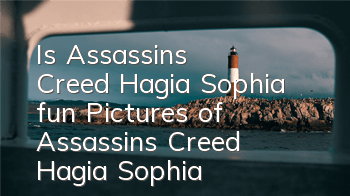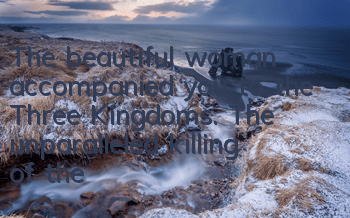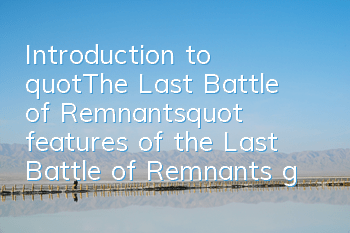▲Do you feel familiar?
Does this building look very familiar? I can guarantee that you have seen it, but I just didn't care. Today I will talk to you about this building that makes you feel both familiar and unfamiliar - Hagia Sophia Cathedral.
Stories of Hagia Sophia
Hadays Sophia Cathedral is a religious building located in Istanbul, Turkey. It was built in 537 AD. Hagia Sophia means God's wisdom in Greek. Its Latin name is Sancta Sophia, which is interpreted as "Church of God's Holy Wisdom", which is dedicated to Jesus in Orthodox Christian theology. It is famous for its huge dome and is a Byzantine architectural model that "changed the history of architecture". The Sophia Cathedral is centralized, 77.0 meters long from east to west and 71.0 meters long from north to south. The layout is a Basilica style covered by dome. The central dome is protruding, with a similar size on the four sides but with a focus. There is a large courtyard in front, two gates at the south entrance, and a semicircular shrine at the end.
▲Cross section of Hagia Sophia Cathedral
The church can be roughly divided into three periods in chronological order:
1. Byzantine Empire
In 532 AD, the Byzantine Emperor Justinian I built the Hagia Sophia Cathedral we see now. Two churches were damaged by war. The period when Justinian I rebuilt Hagia Sophia was the most glorious period of the Byzantine Empire. At the request of the Emperor, various raw materials were transported from all directions and the entire project was completed in less than 6 years. The emperor and the pastor Menas participated in the grand inauguration ceremony together on December 27, 537.
▲Just Justinian the Great of the Byzantine Empire built Hagia Sophia Cathedral
Thereafter, in the 11th century AD, the Roman Catholic Church and the Orthodox Church in Constantinople dislike each other due to their faith issues, and their relationship became increasingly tense. In 1054, the Roman Church sent a cardinal to Constantinople and on July 14, the expulsion of the Orthodox Patriarch was posted on the altar of Hagia Sophia. The Patriarch of the Orthodox Church was not outdone and issued an expulsion order to the Pope, not admitting that the other party was a Christian. Taking this as a node, Christianity was officially divided into Roman Catholicism (Catholicism) and Greek Orthodox (Orthodox). This was also the first great division in Christian history.
This explains why the European Catholic Church stopped moving when the Fourth Crusade ransacked Constantinople and when the Ottoman Empire besieged Constantinople in 1453.
This extortion order lasted for more than 900 years. Until 1965It was only then that the two sides revoked each other's extortion order. (The quarrel lasted long enough)
▲I have been aggrieved for nearly a thousand years, but I finally have a grudge.
In 1453 AD, after four months of siege, the Ottoman Turkish Empire, Sultan Mohammed II, led his army to capture Constantinople, the capital of the Byzantine Empire, and destroyed the Byzantine Empire for thousands of years. The identity of Hagia Sophia as the royal church of the Byzantine Empire was officially ended.
▲Oil painting: The Ottoman army assembled to Constantinople, the white horse was Sultan Muhammad I
2. Ottoman Turkish Empire
After the Ottoman army captured Constantinople in 1453, it changed its name to Istanbul and became the capital of the Ottoman Empire. Hagia Sophia Cathedral was then transformed into a mosque and renamed Aya Sophia Mosque. As a mosque of the Ottoman royal family, it was constantly repaired and renovated during the period, and an Islamic style worship tower was established around the cathedral.
▲The tower of worship around Hagia Sophia was built by the Ottoman Empire
3. Turkish Republic period
After the defeat of World War I in 1918, the Ottoman Turkish Empire gradually collapsed until the establishment of the Turkish Republic on October 29, 1923. In 1935, Kemal, then President of the Republic of Türkiye, ordered the conversion of Hagia Sophia Cathedral into a museum. So the carpet in the church was removed, the plaster originally covered on the inlay painting was carefully wiped off by experts, and the floor decorations were able to see the light of day again. In 1985, the Istanbul Cultural District where Hagia Sophia is located was also selected as a World Cultural Heritage Site by UNESCO.
▲The current Hagia Sophia Cathedral is open to the public as a museum
Introduction to Highlights
The Hagia Sophia Cathedral, which is now a museum, actually does not have many exhibits inside. In fact, the exhibits in the museum are mainly the building itself and the mosaic artworks in it. For those who are interested in taking a look, these things should not be missed.
1. Central Dome
The most eye-catching thing about Hagia Sophia is the central dome, which has a diameter of 32.6 meters and a dome that is 54.8 meters above the ground, and is supported by sail arches on the four pillars. Its transverse thrust is balanced by two half-domes in the east and west and two large column piers in the north and south. There is a circle of 40 window holes at the bottom of the dome, and the interior space of the church is decorated with stained glass mosaics with gold bottoms. The decorative floor, walls and columns are colorful marble, with carved decorations at the stigmas, arches, eaves, etc., and 40 chandeliers at the edge of the dome, and the altar is inlaid with ivory, silver and jade.The throne of the church is made of sterling silver, and curtains woven with silk and gold and silver hung on the altar, with portraits of the emperor and the queen receiving the blessings of Christ and Mary.
▲The magnificent central dome
2.Governor of Venice cemetery
This is also one of the attractions of Hagia Sophia. Although it is a cemetery, it is actually just a stone slab, and the body has been moved away. However, there will definitely be no good man and woman who can stand a piece of land in Hagia Sophia.
▲Governor of Venice Enrique Dandoro
This governor of the Venetian Republic from the 12th to 13th centuries led the crusades to capture Constantinople, the capital of Byzantine at the time, and burned, killed and looted, robbed them all. It was not surprising that the once rich Byzantium was directly lying down. It was not surprising that the Ottoman Empire did not rob and robbery on a large scale when it captured Constantinople in 1453. It was really the only thing that the old boy had to take over two hundred years ago. The most important thing is that the reason why he commanded the crusaders to capture Constantinople was that the crusaders had no money to pay the troops' expenses, so in order not to lose money, he led these crusaders to snatch Constantinople who also believed in God, and Dandoro was still blind at this time.
▲Oil paintings about the Crusaders' capture of Constantinople
3. Exquisite murals
When Justinian I was building the Hagia Sophia Cathedral, exquisite murals were painted everywhere on the walls and domes, with the main body being God and the Virgin.
▲Fresco top about God's mural
▲Frescoes about God and the Virgin
▲Destroyed murals
4. Extremely distinctive architectural style
The biggest highlight of Hagia Sophia is its distinctive architectural style. The plane of Hagia Sophia adopts the Greek cross shape. In space, it creates a giant dome, and the interior does not use columns to support it. The mathematical engineers invited by Emperor Constantine invented an architectural method that uses arches, buttresses, small domes and other designs to support and share the dome's weight, so that high and round domes can be placed on the walls between the windows, allowing people to look up to the beauty and sacredness of the heavens. The dome is supported by two hemispherical arches. The dim, narrow gravel-paved passage on one side of the church can reach the two-story promenade surrounding the three sides of the church. The wash basin outside the church shows the colors of Islam.
▲The hall under the Great Dome allows you to see both Christian murals and Islamic symbols
Halth Sophia is a representative work of Byzantine architecture, creating a complex arch structure balance system centered on the dome on the sail arch. The main body of the church is long and the inner wall is completePaved with colorful marble tiles and colorful mosaics.
▲Byzantine Stigma
Halth Sophia Cathedral is due to its unique architectural style and profound historical heritage. It has become one of the landmark buildings in Istanbul. Whether it is a film, TV series or video games, whenever Türkiye is mentioned, Hagia Sophia Cathedral is unavoidable. Here I have selected several film and television entertainment works where Hagia Sophia appeared:
1. Hagia Sophia Cathedral in the movie "The Occupy"
This movie tells the story of an Australian father who came to Türkiye alone to find his three sons who disappeared in the Battle of Gallipoli in World War I. The background is Türkiye, which has internal and external troubles after the end of World War I. Among them, it gave considerable space to the Hagia Sophia Cathedral.
▲Halth Sophia Cathedral and Blue Mosque in the distance
▲Did you find Hagia Sophia Cathedral?
The author recommends that you take a look at this movie. There are handsome men, beautiful women and good plots!
2. Hagia Sophia Cathedral in the movie "Conquest 1453"
Just listening to this name, you can know that this is a war film. This film tells the battle of the Ottoman Turkish Empire besieged Constantinople in 1453 AD. Putting aside the obvious political color, it has a considerable portrayal of the cruelty of that battle, and it is still a good war film.
▲The young Mohammed II rode his horse into Constantinople, and in the distance was the Hagia Sophia Cathedral
▲The author believes that the highlight of this film - Urban Cannon
3. The Cathedral in the video game Assassin's Creed: Revelation
This game designed the background in Constantinople in 1453, and the production team highly restored the architectural style of the time.
▲Game screen, you can see the Hagia Sophia Cathedral in the distance
▲The game highly restores the interior of Hagia Sophia Cathedral
Travel Tips
The author thinks that when visiting Istanbul, you must go to Hagia Sophia Cathedral, just like when you come to Beijing, you must meet the Great Wall. I hope the following travel information can help you.
Opening hours of Hagia Sophia Cathedral: from April 15th to October 1st, ticket sales will be stopped from 9:00 to 19:00, 18:00; from October 1st to April 15th of the following year, ticket sales will be stopped from 9:00 to 17:00, 16:00, and the hall will be closed every Monday.
The ticket price is 30 lira for adults (credit card available), free for children under 6 years old (student card invalid); tour guide (45 minutes) 25 euros/person, 30 euros/2 people.
The 1500-year history of Hagia Sophia,After experiencing too many ups and downs, even after experiencing the demise of two empires, its beauty is still firm.









